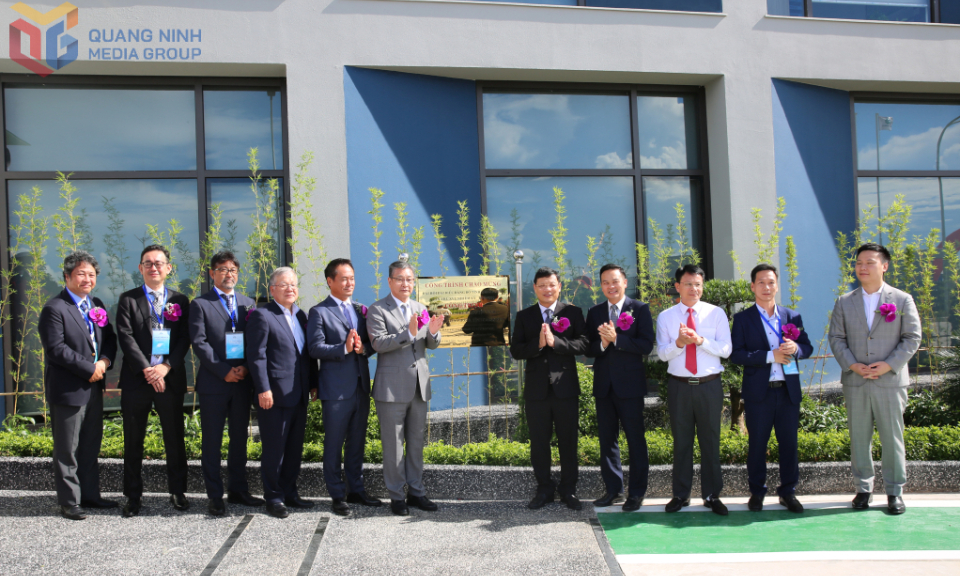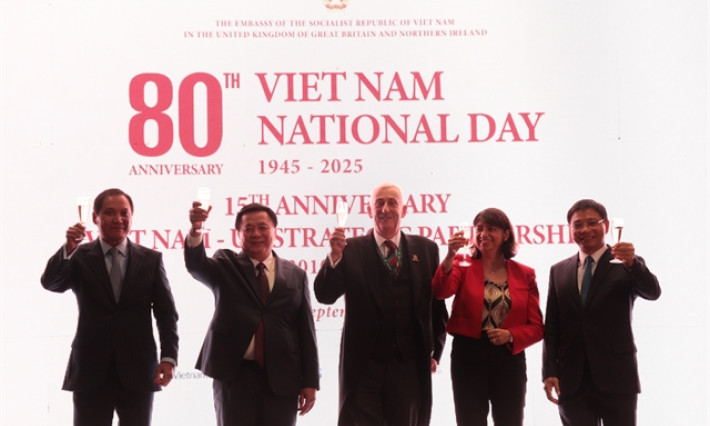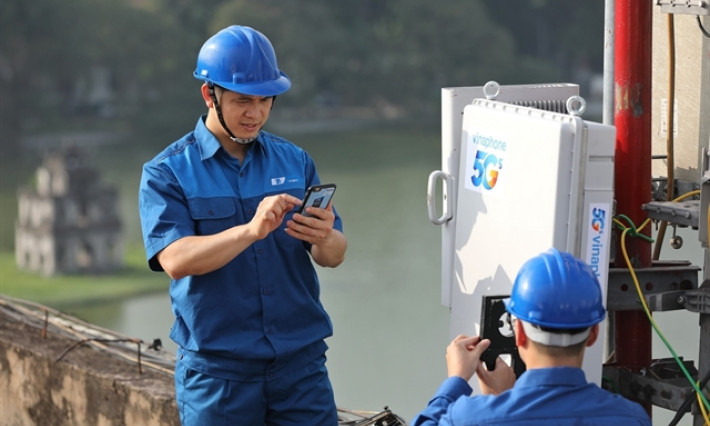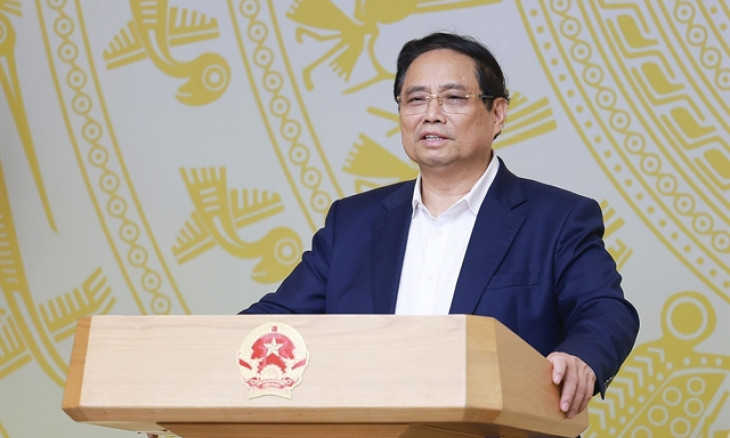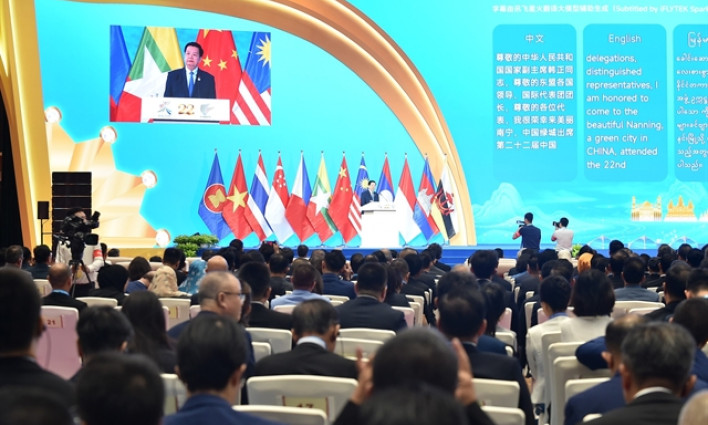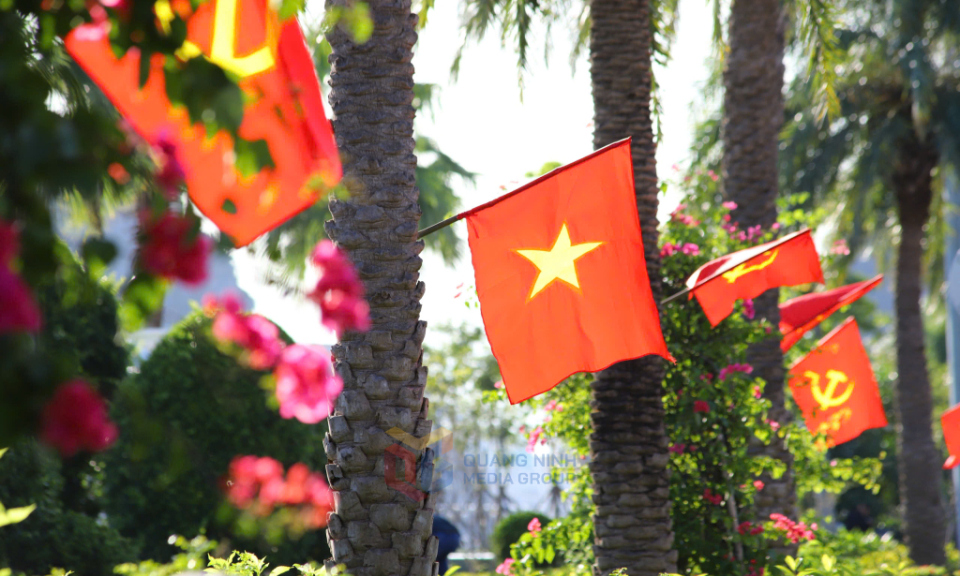Green rice revolution reaps nationwide benefits
Prime Minister Phạm Minh Chính has said we must "breathe life into the rice plants," instilling new vitality in the rice industry through digital technology, green development, circular economy, and innovation.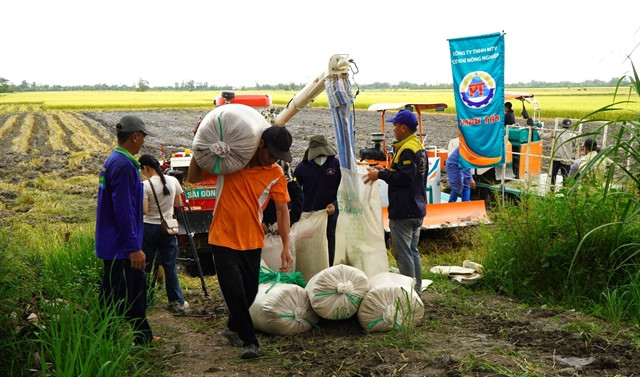
Known as a major rice producer worldwide, Việt Nam is making significant strides in reducing the environmental impact of this staple crop.
Rice farming, which sustains millions of people, particularly in Asia, is a notable source of greenhouse gas emissions due to its unique cultivation methods.
Flooded fields create ideal conditions for bacteria to break down organic matter, primarily rice straw, which releases methane. The overuse of nitrogen-based fertilisers by farmers also contributes to nitrous oxide emissions.
In the Mekong Delta, the main rice-producing region in Việt Nam, around 29 million tonnes of rice straw are produced annually, with over 80 per cent burned on the fields after harvest—a quick but emissions-heavy disposal method.
Additionally, inefficient rice drying and milling practices contribute to food loss, waste, and further emissions throughout the value chain.
To address this issue, given that Việt Nam is one of the top rice producers and exporters, and as part of its ambitious pledge to achieve net zero by 2050, the country became the first in the world to implement a large-scale high-quality, low-emission rice programme—covering one million hectares in the Mekong Delta. This initiative was approved in late 2023 and has attracted considerable attention from international partners.
Aside from environmental commitments, the project also aims to enhance the brand of Việt Nam's rice industry and improve the livelihoods of local farmers.
The project is divided into two phases. Phase 1 (2024-25) will focus on 200,000 hectares with appropriate production infrastructure and cooperative capacity to produce and connect with businesses, targeting high-quality, low-emission rice.
Phase 2 (2026-30) will focus on investment to complete infrastructure and strengthen the system’s capacity to expand to an additional 800,000 hectares.
Highly positive outcomes
After one year of implementation, the Ministry of Agriculture and Rural Development (MARD) reported significant progress.
Key legal frameworks, including technical processes for high-quality, low-emission rice production in the Mekong Delta and a national plan to measure emission reductions, have been issued.
Seven pilot models have been established in five provinces and cities (Cần Thơ, Đồng Tháp, Kiên Giang, Trà Vinh, and Sóc Trăng), with four reporting highly positive results for the 2024 summer-autumn crop.
These results include a 20-30 per cent reduction in costs (with over 50 per cent less seed usage, 30 per cent less nitrogen fertiliser, 2-3 fewer pesticide applications, and 30-40 per cent less water usage).
Meanwhile, productivity increased by 10 per cent (6.3-6.6 tonnes/ha compared to 5.7-6 tonnes/ha in control fields), and farmers' incomes rose by 20-25 per cent (an additional VNĐ4-7.6 million/ha).
Overall CO2 emissions dropped by 3-5 tonnes per hectare.
Businesses contracted all the harvested output at prices VNĐ200-300/kg higher than average.
At a recent conference reviewing the pilot programme in Cần Thơ, Trần Thanh Nam, deputy agriculture minister, said that the success of the pilot models had greatly encouraged farmers and cooperatives to actively participate in the project.
Based on the pilot model's implementation, the ministry had collaborated with local authorities and experts from the World Bank and the International Rice Research Institute to develop a Measurement, Reporting and Verification (MRV) system in line with international standards, providing a scientific basis for measuring emissions across the entire project area.
Buoyed by the initial success, the MARD agreed with local authorities to expand the sustainable, low-emission farming models across 12 provinces in the Mekong Delta, starting with the 2024 autumn-winter and 2024-25 winter-spring crops.
Additionally, the ministry launched a plan to strengthen the capacity of around 620 agricultural cooperatives and nearly 200,000 households involved in the project, focusing on value chain development.
Nam said the ministry was also working with local authorities to review current infrastructure in rice production areas, compile provincial requests, and seek funding for infrastructure upgrades during the 2026-30 phase.
To secure funding, a US$430 million World Bank loan is proposed by the end of 2023 for the “High-Quality, Low-Emission Rice Infrastructure and Technical Support in the Mekong Delta” project. This includes $330 million in loans and $100 million in counterpart funding, mainly for the 2026-27 period, according to the deputy minister.
In addition to direct funding, the State Bank of Việt Nam has worked with the ministry to draft a credit programme to support businesses and cooperatives.
Between 2025 and 2027, around VNĐ20 trillion ($800 million) will be needed, sourced from enterprises, cooperatives, and farmers. This will cover materials, rice, mechanised equipment, and the construction of storage and logistics systems. To mobilise this funding, a VNĐ10 trillion ($400 million) credit package from commercial banks is essential.
As the first country to implement a large-scale low-emission rice production programme, Việt Nam faces challenges due to the lack of precedents, policies, and resources to guide the project.
“Farmers are used to unsustainable traditional rice farming methods with little collaboration. Strong communication, capacity building, and demonstration models, along with policy and resource support, are essential to motivate and enable farmers to shift their production mindset,” an official said.
In addition, the irrigation infrastructure in some areas is incomplete, and resource mobilisation has not kept pace with the project’s progress.
To meet the project’s timeline and donor requirements, the ministry has proposed several measures, including piloting policies for using ODA and preferential World Bank loans, implementing results-based payments, and transferring carbon credits from low-emission rice production.
The World Bank has asserted its strong commitment to the programme, proposing that the Government establish an inter-ministerial working group to harmonise procedures and create a feasible implementation mechanism, with the goal of signing the loan agreement as soon as possible.
'Rice revolution'
Prime Minister Phạm Minh Chính has called for revitalising the rice production through digital technology, green development, the circular economy, the sharing economy, the knowledge economy, and the application of science, technology, and innovation.
“We must love rice as we love ourselves, as we love what is dearest in our lives, to make a revolution for rice cultivation,” PM Chính said.
He also called for mobilising and diversifying resources, including public-private partnerships, loans, bonds, and socialised capital, while ensuring resources reach localities, production facilities, and farmers.
The entire political system would be engaged in the project, but localities must first promote self-reliance and resilience, and mechanisms must be in place to mobilise the strength of the individuals and businesses.
PM Chính urged for faster progress in achieving the target of one million hectares of high-quality, low-emission rice, aiming for 14-15 million tonnes of rice and 9-10 million tonnes of high-quality rice by 2030, or earlier if possible.
Among the key tasks, the application of science and technology would be critical to building high-quality rice brands, including geographical indications, traceability, and planting area codes. Citing the ST25 fragrant rice variety, which was named the World’s Best Rice 2023, PM Chính emphasised the importance of branding.
For climate change response and disaster recovery, the agriculture and environment ministries would collaborate to develop a comprehensive plan to protect the Mekong Delta, including rice-growing land, with phased investment to be completed by the first quarter of 2025.
In terms of emission reduction, the ministries responsible for agriculture, trade and finance would coordinate to ensure that products related to methane reduction and carbon credits are available by the second quarter of 2025.
PM Chính stressed that the power of the people must not be underestimated and must be organised through cooperatives to promote self-reliance, dynamism and creativity.
“The people make history; the rice revolution cannot happen without their strength,” he said.
He also highlighted that both material and spiritual benefits must be guaranteed to ensure farmers' participation.
“We must listen, share, work together, win together, develop together, and share joy, happiness, and pride together,” he added.

